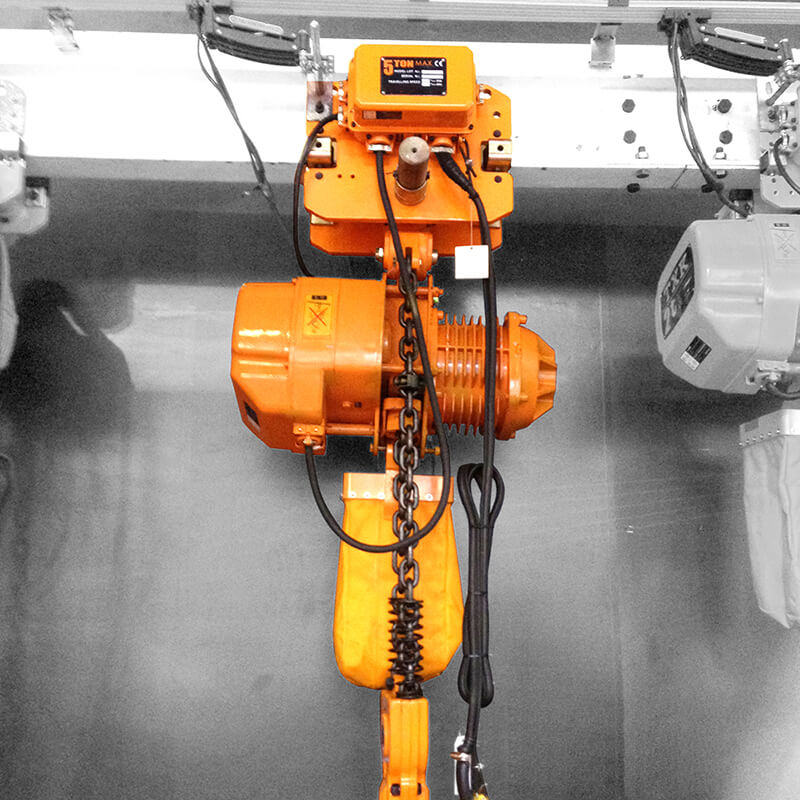What are the types of electric hoists in cranes
Crane hoist is a kind of equipment that uses a rope or chain wrapped drum or hoisting wheel to lift or reduce the load.It is mainly divided into manual hoist, electric hoist, pneumatic hoist and hydraulic hoist, which can be used as lifting medium by chain, fiber or steel wire rope.

Manual hoists are divided into chain hoists and lever hoists.
When the chain hoist lifts a heavy object, the chain is pulled in a clockwise direction and runs with the help of the sprocket. When the heavy object is lowered, the chain is pulled in the opposite direction, and the brake seat and the brake pad are separated.
The lever hoist is to pull the handle with the help of manpower, and through the principle of leverage, it alternately acts on the pliers body loaded in the movement to drive the load.
The manual hoist is easy to use, small in size and high in cost performance. The disadvantage is that it is low in efficiency and labor-intensive.
The electric hoist relies on the electric motor to operate, expands the torque through the reducer, pulls the steel wire rope or the chain to lift the heavy object. The lifting part is composed of two parallel drums, with a large lifting height and a large lifting weight. It adopts a cone rotor or a magnetic circuit motor. Compared with the TV type, it has the characteristics of light weight, reliable braking, and multiple structural forms.
The electric hoist is widely used and easy to use, and can lift large tonnage heavy objects. The disadvantage is that it is large in size, heavy in structure, and easy to burn when overloaded.
The pneumatic hoist uses the pneumatic motor as the power source, and the chain or steel wire rope is used to lift the heavy objects through the deceleration mechanism.
Pneumatic hoist is an ideal explosion-proof hoisting equipment at present. It is easy to use, can be overloaded, has high positioning accuracy for lifting and lowering, safe and explosion-proof, and has a long service life. It is widely used in various special occasions, such as mines, oil fields, and chemical workshops. Etc.
The above is the introduction of the types of hoists for cranes today




